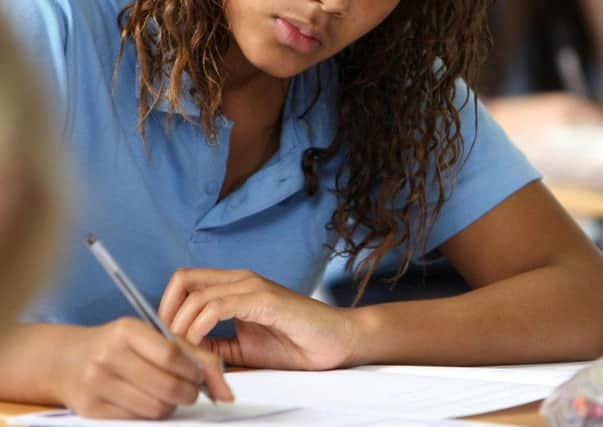Further education '˜hit hardest' by Government's funding cuts


Sixth formers have seen funding fall by a fifth since 2010, the Institute of Fiscal Studies has found, while 16 to 18 year-olds in further education have seen real-term drops of around eight per cent.
The revelations have prompted warnings from unions that institutions are already feeling the impact, with courses and support services having to be cut.
Advertisement
Hide AdAdvertisement
Hide Ad“Parents will be horrified to learn of the damage that has been done to sixth forms and colleges by severe real-terms cuts in Government funding,” said Geoff Barton of the Association of School and College Leaders. “There is no rhyme or reason for the extremely low level of funding for 16 to 18 year-olds. It is a crucial phase of education in which young people take qualifications which are vital to their life chances and they deserve better from a government which constantly talks about social mobility.”
Sally Hunt, general secretary of the University and College Union, said: “Severe cuts to further education funding have led to job losses, course closures and fewer learning opportunities. Staff have seen their pay fall by 25 per cent since 2009, and many colleges are struggling to recruit the expert staff they need. The situation is completely unsustainable.
“If the Government really wants to ensure that everyone can access the skills they need to get on in life, it must urgently invest in further education institutions and their staff.”
In its inaugural report on education spending, funded by the Nuffield Foundation, the IFS found that total school spending per pupil has fallen by eight per cent in eight years. This has mainly been driven by a 55 per cent cut on local authority spending, the report says, alongside large cuts to sixth-form funding.
Advertisement
Hide AdAdvertisement
Hide AdIn primary and secondary, the report concludes, funding per pupil has been better protected but is still about four per cent below its recent historic high in 2015.And while there has been additional funding in recent years, it adds, this will not reverse earlier cuts which equate to around £4,700 for primary pupils and £6,200 for those in secondary.
The biggest spending splurge was seen in early years, in the wake of free childcare schemes, while reforms to higher education funding have increased university resource.
“The fall in further education spending is clear and worrying,” said Tim Gardam, chief executive of the Nuffield Foundation. “The IFS analysis questions the capacity of the system to successfully deliver the reforms currently underway without additional funding. More fundamentally, Government should look hard at these analyses of the myriad ways in which public expenditure flows into the different stages of education from the early years of life into adulthood. Neglect in investment in one educational stage has knock-on effects for others, from the point of view of the individual student and the education system as a whole.”
A Department for Education spokesperson said England has some of the best education in the world, with some of the best outcomes. The schools budget has been protected, they added, with an additional 1.9m children taught in good or outstanding schools since 2010.